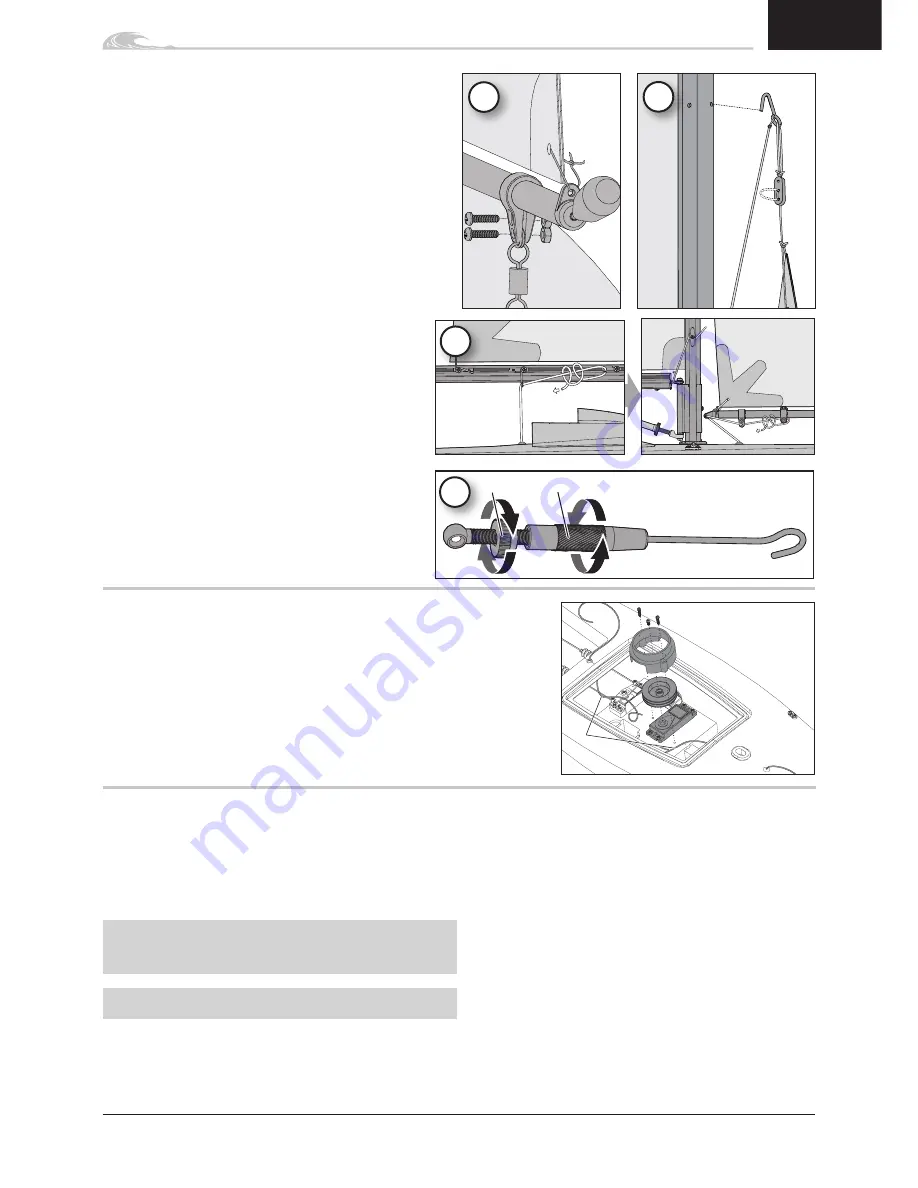
7
EN
1-METER READY-TO-RUN SAILBOAT
13
Nut
Barrel
A
B
B
C
A
B
B
C
15
14
13. To connect the front boom to the hull, lightly mark the
location of the front fitting on the boom. Remove the
nuts and bolts from the front fitting and insert the upper
ring of the front boom swivel. Carefully install and
tighten the nuts and bolts in the fitting to secure the
fitting on the boom at the previously marked location.
14. Loosen the lines on the front sail and install the mast
hook in the front of the mast.
15. Install the respective winch lines on the fittings of the
front and rear booms as shown. Keep the winch lines
loose on the booms until you operate the winch servo.
16. Adjust the mast lines (with sufficient tension so the
turnbuckles can adjust mast angle in the hull) and
crimp the collars on the mast lines using pliers. A collar
can only be crimped once.
17. Adjust the turnbuckles on the mast lines so the mast
is centered and perpendicular to the hull. Loosen a
turnbuckle nut from against the barrel, turn the barrel
on the screw threads as needed, then tighten the nut to
prevent turning. Wrenches or pliers may be required.
A
Lines and Winch Operation
Before the first voyage, or in the event of an accident, closely
inspect the winch lines (
A
) and ensure they move freely to and from
the winch. Always replace worn winch lines and repair the winch
so it responds correctly to the transmitter.
Boating Tips
Consult local laws and ordinances before choosing a location to pilot
your boat.
When running your boat for the first time, we recommend calm wind and
water conditions so that you can learn how the boat responds to your
control.
NOTICE:
Running the boat in salt water could cause some parts to
corrode. If you run the boat in salt water, rinse it thoroughly in fresh
water after each use.
NOTICE:
Because of its corrosive effects, running RC boats in
saltwater is at the discretion of the modeler.
•
Carefully place the boat in the water.
•
Operate the boat at slow speeds near the shoreline. Avoid
vegetation in the water so the keel and rudder are not blocked.
However, if these parts are blocked, remove the boat from the
water and remove the debris before continuing operation.
•
Always keep your boat in sight while it is in the water.
•
Once you are comfortable operating the boat at slow speeds, it is
safe to operate the boat farther from the shore at higher speeds.
•
Bring the boat back to the shore when you notice the boat starting
to become less responsive to the transmitter.
Use care to avoid boating in areas where there are numerous people
(such as swimming or fishing areas or park waterways).
Avoid boating near:
• other watercraft
• stationary objects
• waves, wakes and other rapidly moving water
• wildlife
• floating debris
• overhanging trees
Operate your boat in water deeper than 22 inches (56 cm).
Crash damage is not covered under warranty.
17
































